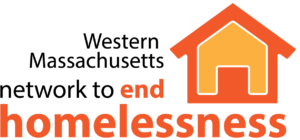HHS Secretary Kathleen Sebelius Elected New Chair of US ICHH for 2012
Secretary Sebelius released the following statement in regards to her election:
Yesterday, I was pleased to take on the role of Chair of the U.S. Interagency Council on Homelessness. I look forward to building on the hard work of this year’s Chair, Secretary Solis, whose accomplishments include: developing a plan to increase access to mainstream benefits and increasing engagement with governors and mayors to align local plans to Opening Doors – the nation’s first-ever comprehensive strategic plan to prevent and end homelessness.
The implementation of Opening Doors over the last year has given our federal agencies an opportunity to work together on an issue we all care about. Each member of the Council brings a unique approach to this problem and through this collaboration we’re laying the groundwork for future successes with better data collection, better reporting, and better use of mainstream resources. By engaging states and local communities in the plan’s goals and strategies, we’re making sure everyone is in agreement as we move forward.
While I’m proud to say we are making progress, homelessness remains a serious issue and there is more work to do. As I take on the role of Chair for the year ahead, I am looking forward to building on our current foundation as we work to end homelessness altogether. In these tough economic times, continued cross-agency collaboration is more important than ever to help those who are homeless.
The major topic for discussion was ending youth homelessness by 2020 and the recent work done by the HHS-headed Interagency Group on Youth. The Group consists of representatives from USICH, HHS (the Administration for Children and Families, the Office for the Assistant Secretary for Planning and Evaluation, the Substance Abuse and Mental Health Services Administration), HUD, DOL, Department of Education, Department of Justice, Social Security Administration, Department of Agriculture, Corporation for National and Community Service, and the White House Domestic Policy Council. It has been meeting weekly since October 19th bringing together expert knowledge from federal and state programs in the child welfare, education, housing, and juvenile justice sectors.
The Group spoke to the full Council on what we know (and do not know) about youth homelessness currently and federal resources available to serve this population. The Group also spoke about the challenges of serving this population – notably the lack of consistent data available on the number of unaccompanied youth and research on the practices that help this population. We do know, however, that there are sub-populations of youth that have a much higher risk for homelessness: youth exiting child welfare or the juvenile justice system and LGBT youth. At the meeting, all of the member agencies agreed to work together to marshal appropriate resources to improve our knowledge and achieve the goal of ending youth homelessness by 2020. Collaboration will have to be at the forefront of our work at all levels of government and with service providers currently serving this vulnerable population in order to ensure that we have a better understanding of the size of the problem, the needs of different sub-groups, that successful strategies are implemented and progress is made.

